In a sign of more trouble ahead, Saudi Arabia has secretly drafted a plan to further remove subsidies as the kingdom tries to offset the impact of its struggling economy – thanks to low crude oil prices. In spite of oil price rally recently, the latest due to a 450,000-bpd pipeline shut down in the North Sea because of a crack, the rise isn’t fast enough to plug the holes of spendthrift Saudi.
According to a source from Bloomberg, the once cash-rich Kingdom of Saudi Arabia plans to raise its gasoline / petrol prices by at least 80% in January 2018. Together with the mind-boggling increase, jet fuels prices will be raised to international levels in one go, not incremental. But that’s not the only New Year gift from Crown Prince Mohammed bin Salman.
Other fuels such as diesel, kerosene and heavy fuel oil will see incremental price increases over several years. What this means is the subsidies of all energy prices in Saudi would eventually be phased out – by 2023 at the earliest, and 2025 by the latest. In the same breath, electricity tariffs will also increase gradually.
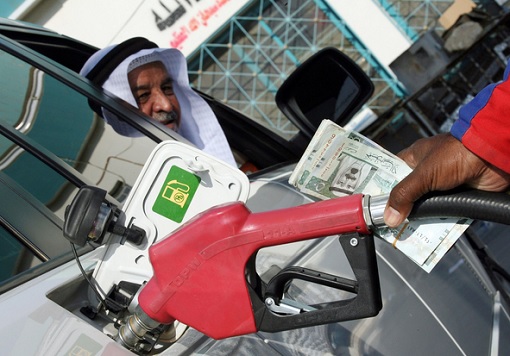
Saudi authorities first reduced subsidies in December 2015, after the global oil prices tumbled. Back then, the kingdom jacked up gasoline / petrol prices by half – 50% – not to mention higher electricity, water, sewage, diesel and kerosene tariffs. Months later in September 2016, Saudi made its most drastic move to save money.
Ministers’ salaries were cut by 20% and perks for public sector employees were scaled back. As a result, the custodian of the Two Holy Mosques was almost hit with Arab Spring II. By April 2017, the “April 21 Movement” hit the Twitter hashtag. The calls for protests in at least 4 Saudi cities had apparently spooked the Al Saud monarchy of Saudi Arabia.
The unpopular cuts which affected two-thirds of working Saudis, including military personnel, had angered many people because while the monarchy continues with its lavish public spending, the normal citizens were victimized. Saudis demanded for reinstatement of their financial benefits. Terrified by a potential of Arab Spring II, the government made U-turns.
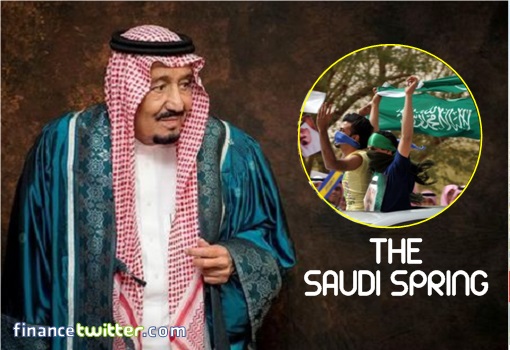
The Al Saud monarchy overturned their own decision in April 2017 when King Salman issued a royal decree restoring “all allowances, financial benefits, and bonuses” for civil servants and military personnel. To pacify military, the monarch even ordered an additional 2-month salary bonus for its military forces involved in a brutal but losing war against neighbouring Yemen.
The panicked King Salman, obviously having been advised by his Crown Prince Mohammed bin Salman, also told the kingdom’s central bank to instruct banks to maintain the current favourable terms of consumer and property loans to low-income Saudis. Amusingly, it was the same Saudi prince who was behind the unpopular moves to cut government spending in the first place.
A 32-year-old favourite son of King Salman who has been named as the successor to the throne of the Kingdom of Saudi Arabia, Crown Prince Mohammed’s 2030 plan for the post-oil era was initially involved the elimination of subsidy entirely by 2020. But after his hastily and half-past-six policies almost turned the kingdom into chaos, the plan has been shifted to a later stage.
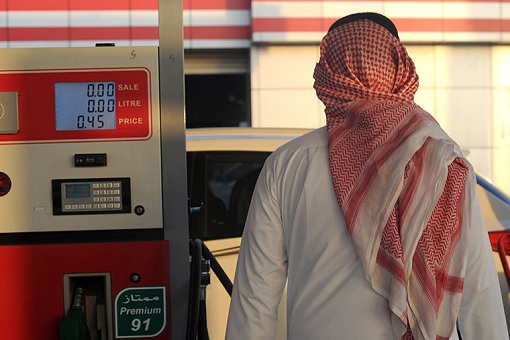
This round, the Ministry of Labour and Social Development is set to announce the details of a cash transfer program – the Citizen’s Account. The program would see low and middle income Saudis being compensated with cash before the next round of subsidy cuts. Still, even with 80% cut, the petrol price hike will force Saudis to pay only US$0.44 a liter (from US$0.24 a liter).
In comparison, Americans are paying US$2.45 (AAA National Average as of 12 Dec, 2017) a gallon (US$0.65 a liter; RM2.65 a liter). However, it’s still an insult to Saudis whom once paid very little for their fuel. But the good and glory time are long gone. The Kingdom of Saudi Arabia today is still burning its reserves like crazy, just to stay afloat and alive.
Their foreign exchange reserves fell to US$487 billion in July this year, a significant drop of 34.5% down from US$744 billion in September 2014. In short, the kingdom has literally burnt a third (30%) of their reserves within 34 months since September 2014. That’s about US$7.5 billion of hard cold cash being burnt – every single month.
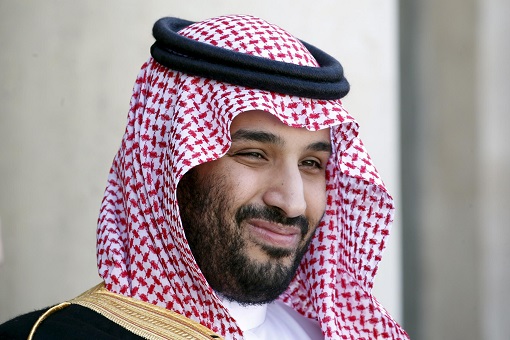
And according to the IMF (International Monetary Fund), in order to achieve zero deficits in 2017, Saudi’s breakeven oil price is US$73.10. In fact, the situation has gotten so bad that Crown Prince Mohammed had taken a short cut to replenish the kingdom’s drying coffers – arresting his brother princes under the pretext of corruption crackdown, but amusingly with an offer of “cash for freedom.”
While it’s humiliating that the once cash-rich Saudi is reduced to borrowing from bond markets to make ends meet, it’s absolutely flabbergasted and terrified that Crown Prince Mohammed uses suppression, intimidation and blackmail against his own royal family members to squeeze some billions. Surprisingly, he was exposed of splashing US$450 million for a piece of da Vinci painting.
Other Articles That May Interest You …
- Exposed!! – Saudi Crown Prince The Buyer Of $450 Million da-Vinci, And The Amazing Reason Why He Did It
- Saudi Crown Prince Offers Princes: “Gimme 70% Of Your Money And You Can Walk”
- Replenish Coffers – The $800 Billion Hidden Reason Behind Saudi Corruption Crackdown
- Game Of Thrones – Crown Prince Crackdown On Princes, Alwaleed Arrested For Corruption
- If Oil Goes Above $70, The Complacent & Lazy Saudi Might Not Reform At All
- Saudi Prince Finally Admits Extremism, Promises A U-Turn Back To “Moderate” Islam
- Arab VS Arab – The Hidden Reasons Why Saudi & Its Gang “Unfriend” Qatar
- A Saudi Spring – Here’s Why King Salman Returns Perks To Public Sector
- The Glory Days Are Over – OPEC Warlord Saudi Has Started Borrowing

|
|
December 13th, 2017 by financetwitter
|


|

|

|

|

|

|













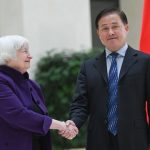














Comments
Add your comment now.
Leave a Reply